First off, talk to us briefly about your approach to working. Is there any type of philosophy you follow photographically?
Jason Reblando (JR): I was actually involved with doing lung cancer research before I became a photographer, and my boss told me that our research needed to be like digging a mile deep and an inch wide, not a mile wide and an inch deep. I’ve adopted that approach to how I approach photography, and it’s led me to photograph several long-term projects. Dedicating a fair amount of time to a particular subject requires both curiosity and direction, which often feel like they contradict each other, but when they work together, hopefully they’ll lead me through a process of discovery. Also, I think that the ability to return to a subject repeatedly allows me notice different aspects of a place or person each time I come back.
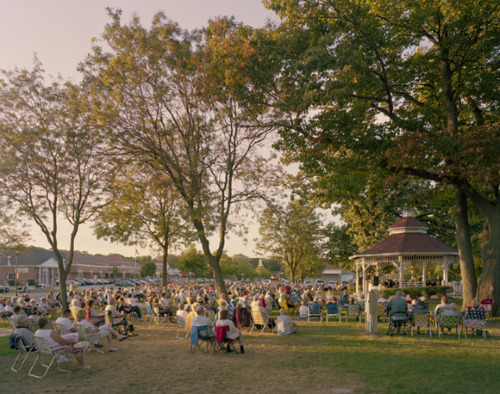
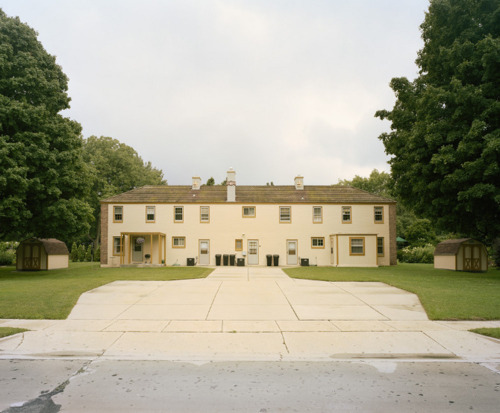

© Jason Reblando from the series 'New Deal Utopia'
A great sense of community shines through in your work. In some of your projects such as 'Lathrop Homes' and 'Youth Boxing', you shed light on communities that might otherwise go unnoticed or even ignored by those on the outside. What role do you see yourself in as a photographer, and what do you hope to achieve through your work?
JR: My role as a photographer has evolved while photographing 'Lathrop Homes' in particular. I started photographing here because of my ongoing interest in planned communities. Lathrop Homes, has indeed gone unnoticed and ignored for a long time, until recently and is currently undergoing a preservation battle because it’s on some very desirable real estate in Chicago. Many people drive by and think it’s abandoned, so my objective was to evoke the complexity of the community that resides there, but also show a landscape and built environment that defied many expectations of public housing. I had my own aesthetic concerns that I wanted to achieve which are related to people in transition and public space, and these concerns coincided with a hope that the powers that be would reconsider demolishing a place that has historic and architectural value and replace them with generic condos.


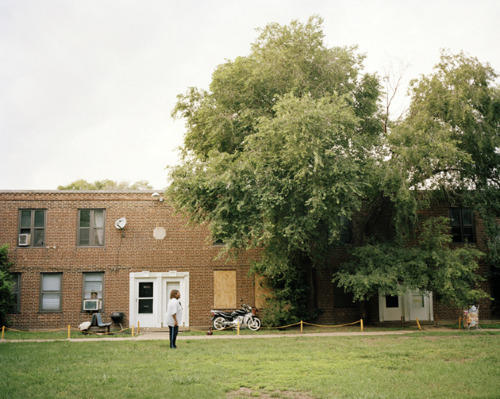
© Jason Reblando from the series 'Lathrop Homes'
The photographs of the youth boxers also deal with a community in transition, but instead residents dealing with displacement, it’s young boxers photographed as they go through adolescence and then adulthood. Actually it was through many of these boxers that I became familiar and interested in what was happening with housing issues in Chicago, as a fair amount of them went to boxing rings at field houses that were connected to public housing developments. However, with these photos I hope that viewers can engage with these contemplative moments that occur between rounds and reconsider the perception that boxing is all raw physicality. I like these moments when the boxers are thinking about what they just did and thinking about what they need to adjust and fix for the next round.
My favorite project of yours is 'Lathrop Homes'. There are several beautiful and memorable photographs in this series, and I think that’s largely because you photographed this community with such a great sense of respect and compassion. Could you talk a bit about how you got involved in this project? Did you find it difficult as an outsider to gain access into these lives and homes that you photographed?
JR: Of course. Before I started photographing 'Lathrop Homes', I was photographing a public housing high-rise named Stateway Gardens on the South Side of Chicago, and where I spent lots of time making boxing photographs. As that complex was being demolished, I found out about Lathrop Homes, which I heard was an atypical public housing development located on the North Side of Chicago. As I mentioned before, it was very different than the high-rises that are often described as “notorious” and “vertical ghettoes.” Instead, it was a very verdant and open development on the Chicago River that was located near lots of popular shopping complexes. The incorporation of the natural landscape with the elements of the city were very striking and I knew immediately that it was unique amongst public housing stock. I knew the names of a couple of community leaders through a freelance job I had there, and told them that I’d like to do a photo project on Lathrop. They were originally pretty wary of my presence but I kept going back, and I provided my subjects with copies of the photos I would make each time. Most everyone I met was very generous with their time, and sometimes would even have me over for dinner. I was going there at least once a week for a couple of years, and it was a pretty small development, maybe three or four blocks, so I became a pretty familiar presence pretty fast. I was familiar with what was going on with their tenuous housing situation, so I wanted to be pretty sensitive to their needs. I never wanted to overstay my welcome. Whenever I returned, residents would often greet me with, “Hey, Picture Man! Where’s my picture?!"
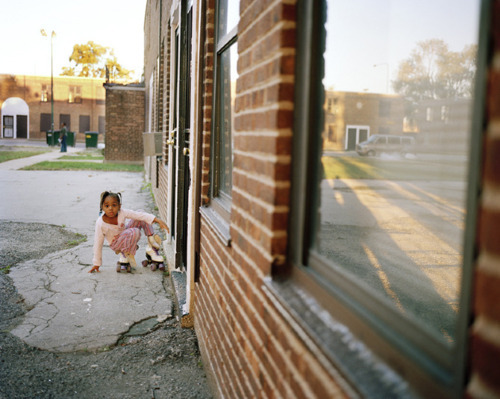

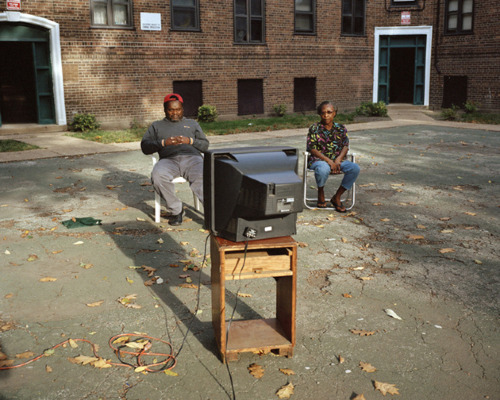

© Jason Reblando from the series 'Lathrop Homes'
What’s coming up next for you, photographically or otherwise?
JR: Continuing to dig and dig into my next project. I was doing some research about the history and architecture of Lathrop Homes and found out that it was built as a result of New Deal policies in the ‘30s. As I read more, I learned about three planned communities, conceived and constructed by the government called "Greenbelt Towns.” They’re in Greenbelt, Maryland; Greenhills, Ohio; and Greendale, Wisconsin, and located outside of Washington, D.C., Cincinnati, and Milwaukee, respectively. I’ve been shuttling back and forth between the three towns, and it’s been a really nice breath of fresh air, both conceptually and geographically. I’m becoming interested in utopian ideals and if and how they affect how communities are planned and experienced. Stateway Gardens, Lathrop Homes, and the Greenbelt Towns all started out with the best utopian intentions, but the experiences ranged from lasting success to dystopic failure.


© Jason Reblando from the series 'Youth Boxing'
Last but not least, what’s your favorite color?
JR: While most of what I own are various shades of black and grey, I have to say my latest project leads me to say “green.” Most certainly green.
---
LINKS
Jason Reblando
United States
share this page